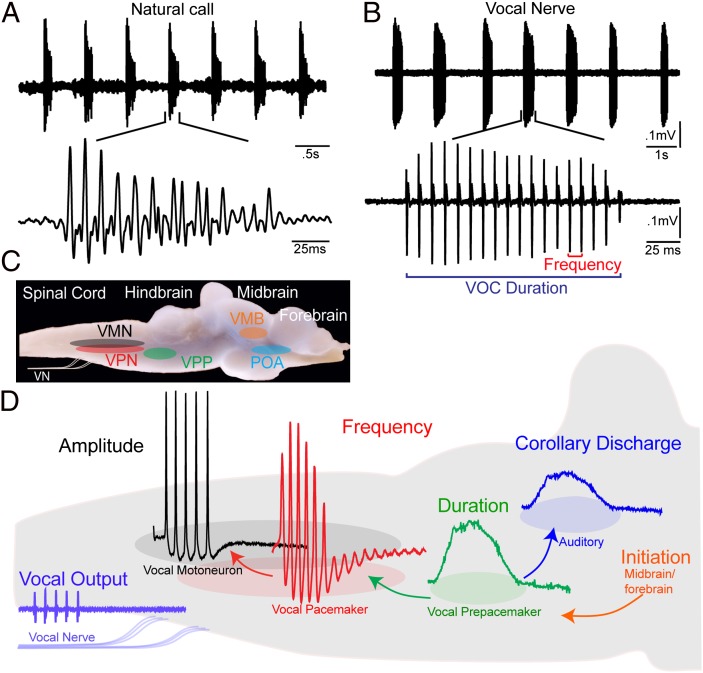Fig. 2.
Vocal behavior and neural network of plainfin midshipman fish. (A) Oscillogram record of repetitive series of natural calls (“grunt train”) recorded with hydrophone; lower trace shows one call. (B) Spontaneous vocal motor volley recorded from vocal occipital nerve (VOC) with temporal properties like those of natural vocalization; lower trace shows one VOC. VOC duration is time between first and last pulses; frequency is pulse repetition rate. (C) Vocal motor nuclei superimposed on lateral view of intact brain. Indicated are VPN, VPP, and VMN nuclei and vocal nerve (VN). Vocal midbrain (VMB) and forebrain preoptic area (POA) are vocally active sites. (D) Premotor compartmentalization of neurons code for distinct acoustic attributes. Representative intracellular records from vocal nuclei and vocal nerve superimposed on background sagittal image of caudal hindbrain. Descending input from vocal midbrain/forebrain neurons activates vocal hindbrain. Vocal prepacemaker nucleus is source of known corollary discharge informing auditory nuclei about a vocalization’s temporal properties. (Adapted from ref. 37.)

